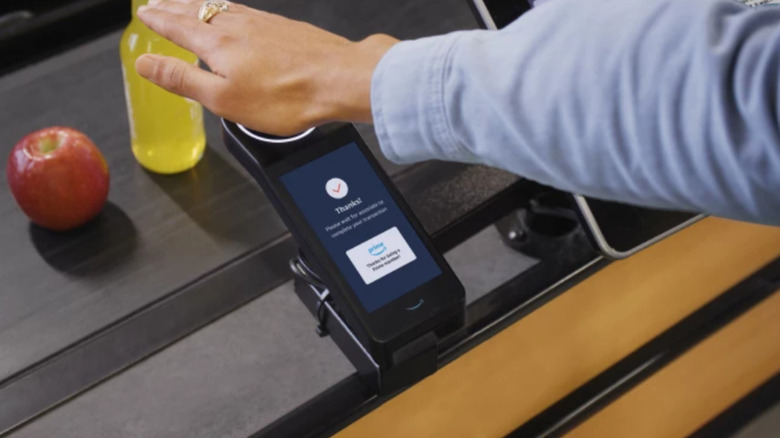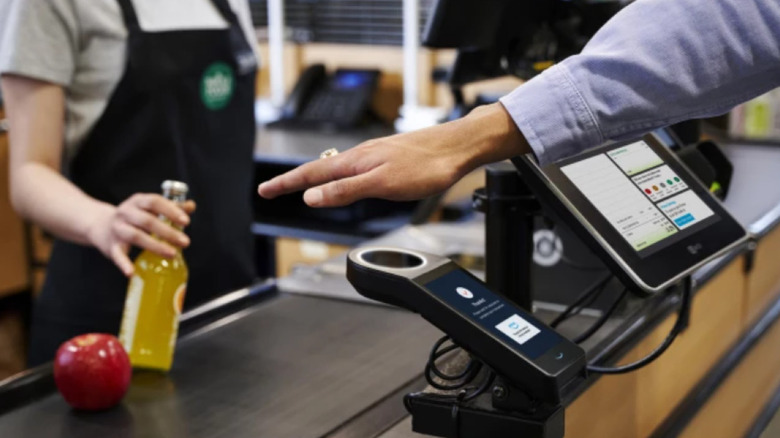Whole Foods' Biometric Palm Scanner Rollout Is Nearly Complete
The old saying "cash is king" has been eliminated from the conversation; contactless payment options have taken over the register transaction. While the phone scan or credit card tap is convenient, what is one to do when they accidentally leave the house without them? Luckily, Whole Foods stores are bringing payment options directly to people's hands.
According to Food & Wine, all Whole Foods locations will offer the Amazon One palm scanner payment methods by the end of 2023. This biometric payment option was first launched in 2021 at selection locations and has continually received positive feedback from customers. Consumers who opt into the Amazon One service have a credit card on file that is linked to their Prime account, which allows the shopper to wave their palm over the scanner, pay, and go on their merry way. After two years of limited use, the company is ready for the widespread rollout. It seems that some people believe that the palm-and-go gives them a hand-up on their shopping experience.
Although convenience can be king, some people originally raised concerns over this type of check-out option. Similar to the self-checkout lane popularized by many retailers, the scan-and-go payment choices can eliminate many a worker's job. Worker-free technology did cause unions to voice their opposition when the concept was first launched.
Whether or not other stores adopt the palm-paying system is up in the air, but one thing is clear: consumers want the check-out experience to be as efficient as possible.
Do palm payment systems read more than your payment information?
From browsing websites to shopping apps, consumers have become more aware of where and how their data is being collected. From opting into cookies to keeping credit cards on file, there are numerous ways in which companies are collecting your data. As Whole Foods expands its Amazon One palm payment systems, some people are putting their hands up with data collecting concerns.
According to Amazon, the palm payment method addresses the "highest level of customer security and data privacy." The company states that it has never had a false identification and the palm payment puts the customer in control. In addition, the company asserts that palm identification is race- and gender-neutral, meaning the technology cannot detect these identifiers.
Even if Amazon's assertions prove true, the company is collecting the palm's individual ridges and hand contours on their servers. While Amazon states that its technology is safe, is not shared with other agencies, nor is used for marketing purposes, consumers are proactively giving access to their biometric data. Although some might argue that face recognition is used on many smart devices, that image is locally stored and not shared on a company cloud, as your palm scan will be. Still, the question arises of what biometric data a company can or should be allowed to collect. Even if consumers want the convenience of leaving their wallet or phone behind, they still need to take into consideration the cost not reflected at the bottom of that receipt.

